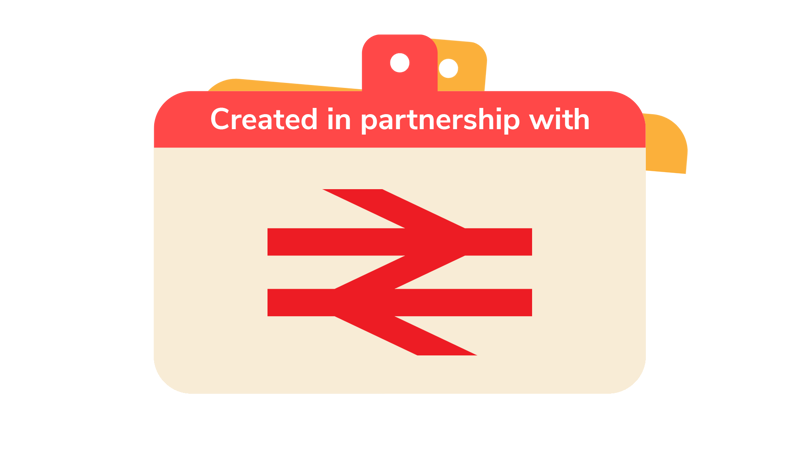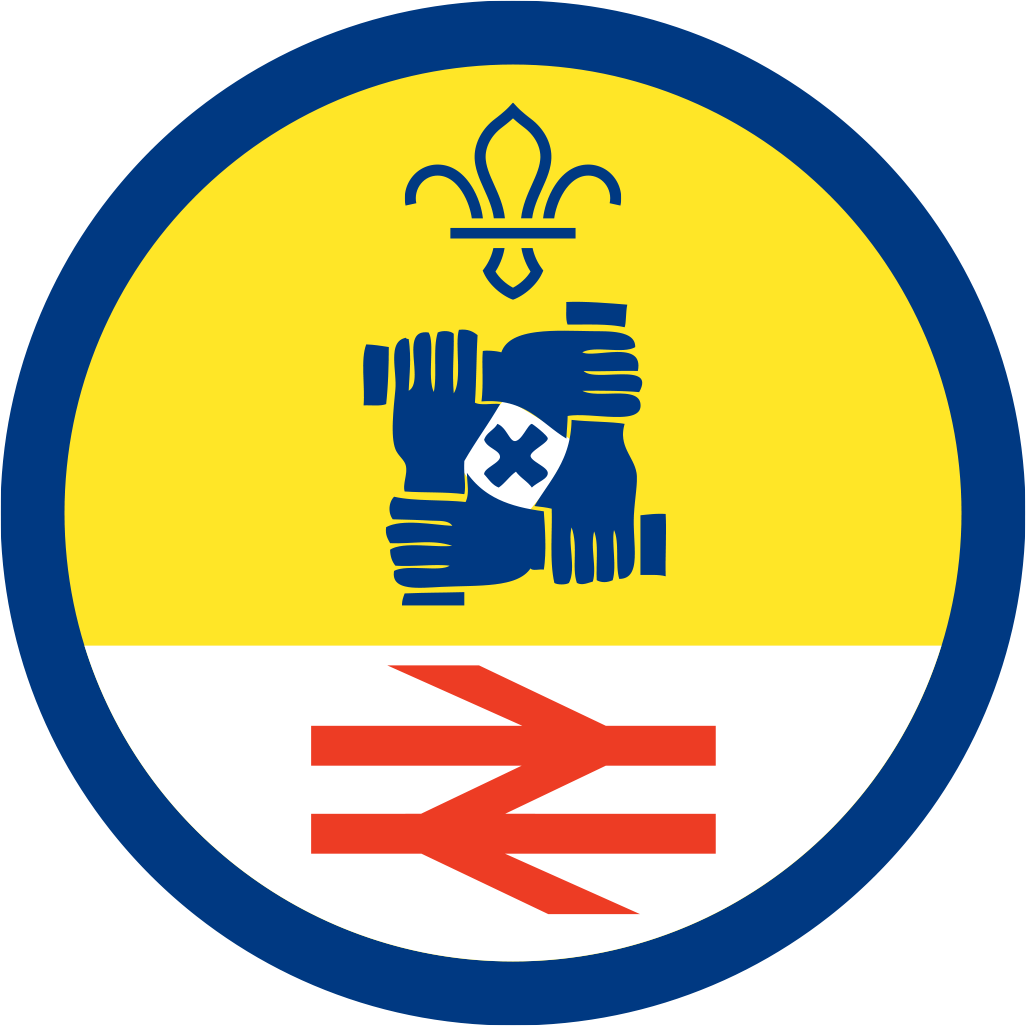
All aboard the train

If you think someone is in need of help, trust your instinct. This is about taking positive action if you see someone in distress, to approach them and see if they are okay.
The Rail Industry

Train for the game
- Everyone should talk about trains in their local area. Are there train stations? What about railway crossings? Level crossings often have lights, warning signs, and barriers that warn people when a train’s about to come past.
- The person leading the activity should remind everyone that they should always stop and wait at a level crossing. They should never cross when the barriers are down; even if they’re in a hurry, they should stop and wait until all the trains have gone through and the barriers have risen up. Head over to Network Rail’s website to find out more on level crossings for pedestrians.
- The person leading the activity should ask if anyone can remember how to cross a road safely. Crossing a level crossing is similar – people should stop, look, and listen.
- Everyone should call out ‘stop’ and hold a hand out in front of them like they’re telling someone to stop. They should look left and right, then left and right again, and cup their hand to their ear to listen for trains.
Play the game
- Everyone should move around the space.
- When the person leading the game calls out ‘red light’ or ‘amber light’, everyone should stop. When they call out ‘green light’, everyone should keep moving.
- When the person leading the game calls out ‘a train is coming with three carriages’, three people should make a train by holding onto each other’s waists in a line.
- At the same time, two pairs should make barriers by putting their palms against one another. They should stand a little way apart, with enough space for the train to pass between their closed barriers. They could beep, to let everyone know a train is coming.
- The train should pass between the barriers. The barriers should stay closed to protect cars and people from the train. Once the train is through, the barriers should stop beeping and open by lifting their arms (so their palms no longer touch).
- At the same time, anyone who isn’t part of the train or barriers should stand behind the barrier until the train’s gone through. Once the train’s gone through, they should stop, look, and listen, then move through the crossing.
- Everyone should continue moving around the space.
- The person leading the game should continue to call out the different coloured lights, or tell everyone a train is coming with a different number of carriages.
- Each time a train comes, everyone should take a different role from the time before. If someone’s a train, for example, they can’t be a train next time – they should be part of the barrier or a road user instead.
Reflection
This activity helped everyone learn how to be responsible for their own safety at a level crossing with a high energy game that can be played anywhere. The person leading the reflection should remind everyone that they should stop, look, and listen. What advice would people give to someone else who was nervous about level crossings? As long as people stop at the barrier, look for the light, and listen for the alarm, there’ll be safe. Can anyone remember when you should stop and wait? As soon as the lights or alarm start, or as soon as the barrier starts to move – whichever is first. Never try and cross once the warning has begun, even if you’re late or in a hurry. Well done to everyone who listened carefully and got stuck into learning how to be safe and responsible.
Safety
All activities must be safely managed. You must complete a thorough risk assessment and take appropriate steps to reduce risk. Use the safety checklist to help you plan and risk assess your activity. Always get approval for the activity, and have suitable supervision and an InTouch process.
- Active games
The game area should be free of hazards. Explain the rules of the game clearly and have a clear way to communicate that the game must stop when needed. Take a look at our guidance on running active games safely.
- Contact games and activities
Make sure everyone understands what contact is acceptable, and monitor contact throughout the activity.
Start with just the coloured lights until everyone’s confident, then introduce the trains and the barriers. Practise several times, then once everyone’s got the hang of it, make it trickier by making the trains long or short. What about a train with one carriage, two trains with three carriages, or a train with fifteen carriages?
Anyone who feel unsure could watch for a while before joining in. They could also be a safety inspector who checks the barriers are working correctly before the train moves through.
All Scout activities should be inclusive and accessible.
You could visit a local level crossing and cross it safely together. Check a timetable to see when trains come through.
